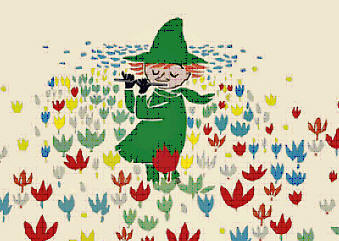The history of Climate Songs
The golden era of songs about climate change was in the sixties.
Actually,
several
of the
great songs of
the sixties are remakes of climate songs that were never released. But little
is
known about these early songs about climate change. Why were these great songs
never released
? Who started
writing these songs ? Why were these songs written at a time when the climate
issue was not really hot?
sixties are remakes of climate songs that were never released. But little
is
known about these early songs about climate change. Why were these great songs
never released
? Who started
writing these songs ? Why were these songs written at a time when the climate
issue was not really hot?
The oldest known climate song is Dylan's "Blowing in the Wind",
likely written
in 1961. The following year Dylan wrote
"Hard Rain's a-Gonna Fall". Both these climate songs were
released under the original names but with modified texts. In 1963 Dylan wrote
"The Climate Is a-Changing", rewritten and released as "The Times they are
A-Changing. Likely
Dylan gave inspiration for the John Lennon song "Carbon Man", later rewritten
and released as "Nowhere Man" and the Lennon-McCartney song "We Can
Work It Out", both probably written in 1965. The same year Dylan wrote "Who
Changed the Climate", later released as "Positively 4th Street". The
following year Paul McCartney made the sad "For No One", while the first climate
song by George Harrison "While Glaciers Weep" came in 1968, later released as
"While My Guitar Gently Weeps". It is not known when Dylan's song "Make My
Dream Untrue" was written, but it was recorded more than 30 years later as "Make
You Feel My Love".
In the early seventies Alan Hull (Lindisfarne) wrote
"All
Fall Down", "Poor Old Planet" and "CO2
Society", the latter two released as "Poor Old Ireland" and "City Song".
At about the same time Neil Young wrote "The Damage Done", later rewritten
and released as the anti-drug song
"The Needle and the Damage Done". Another great climate song,
"Six Degrees", was written by Bob Dylan in 1974. The reference to Mark Lynas and
his book "Six Degrees" is surprising as the book did not exist at the time. The
song was rewritten and later released as one of the most beautiful love songs
ever written, "Wedding Song".
 sixties are remakes of climate songs that were never released. But little
is
known about these early songs about climate change. Why were these great songs
never released
? Who started
writing these songs ? Why were these songs written at a time when the climate
issue was not really hot?
sixties are remakes of climate songs that were never released. But little
is
known about these early songs about climate change. Why were these great songs
never released
? Who started
writing these songs ? Why were these songs written at a time when the climate
issue was not really hot?